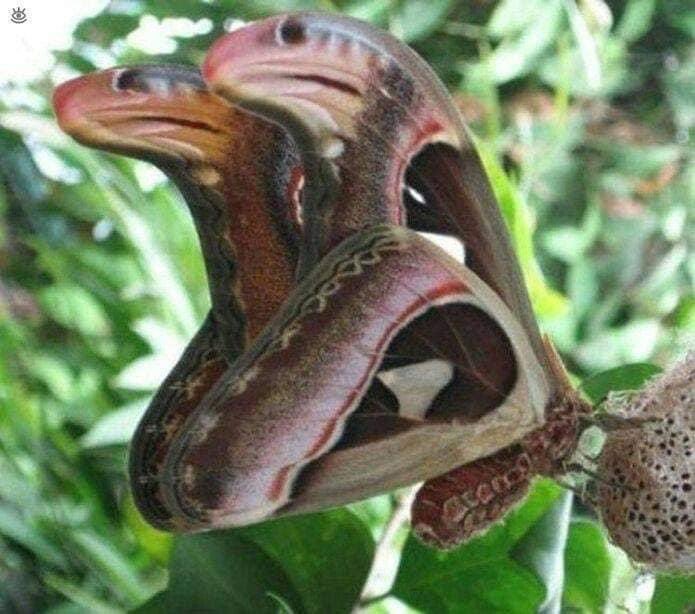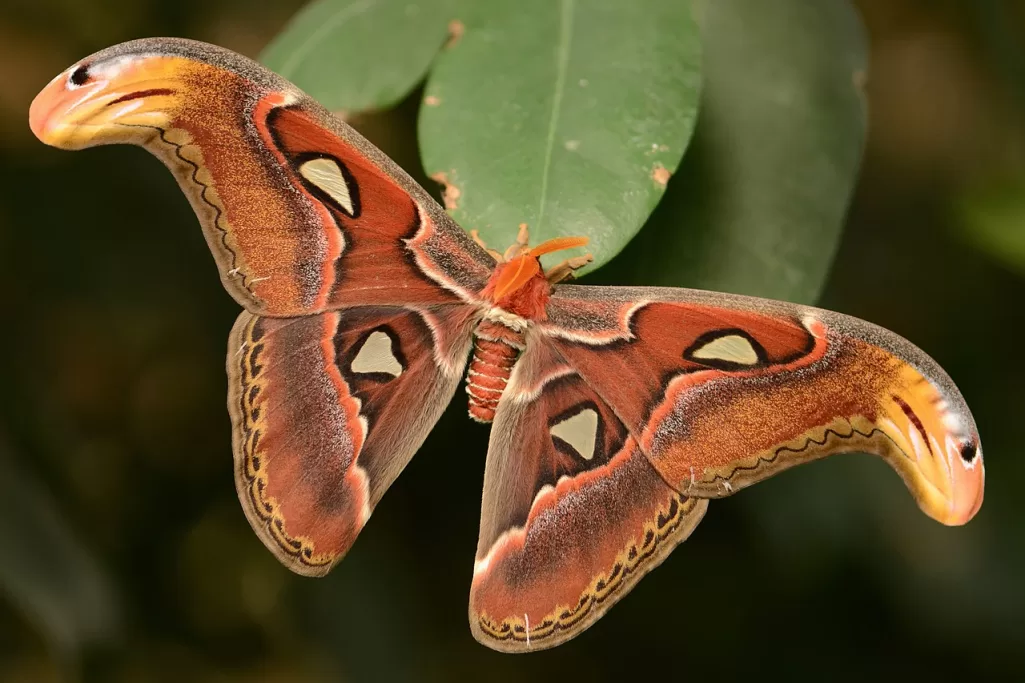- The natural world is teeming with fascinating species, showcasing unique adaptations for survival. Each organism plays a crucial role in maintaining ecological balance.
- The Deceptive Image: “Angry Snakes” in a Tree Images of three angry-looking “snakes” in a tree circulated online, sparking curiosity and fear. Twitter user Rob Allam shared the photo, revealing the astonishing truth behind the optical illusion.

“Attacus Atlas is among the largest butterflies worldwide… camouflaging itself as a snake,” explained Rob.
- The Atlas Moth: Master of Deception The trio of “snakes” turned out to be pieces of the wings of the Atlas moth, a giant insect found in Asian forests. With a wingspan of up to 24 cm, it mimics a snake to deter predators during its brief two-week adult stage.

“That disguise is really good,” remarked a surprised social media user.
- Survival Strategies: Camouflage and Mimicry Various species, like the Atlas moth, showcase incredible adaptations. Insects use camouflage to blend in, while the Atlas moth employs its snake-like appearance for protection. Contrary to belief, these moths are not strong flyers but use their mimicry to ward off threats.
- Global Encounters and Fascinating Sightings While the Atlas moth is native to Asian tropical forests, reported sightings in Europe and the US attest to its intriguing presence. A remarkable incident in Greater Manchester saw a family mistake an Atlas moth for a bat, emphasizing the species’ unique and captivating nature.
Related Posts

World’s oldest living woman, 116, reveals a surprising secret to her long life
When people reach an extraordinary age, curiosity follows. For 116-year-old Ethel Caterham, the secret isn’t a strict diet or wellness trend. She simply says her long life…

“Beet Benefits: What Doctors Say Happens When You Eat Them”
Beets aren’t just trendy—they’re genuinely nutritious. Packed with antioxidants, nitrates, fiber, and folate, they “can benefit your heart, brain, digestion, and even exercise performance.” Heart Health: Beets…

Why Are My Veins Suddenly Bulging and Visible?
Bulging veins are usually harmless and often appear due to “exercise, heat, aging, genetics, or weight,” most commonly on the legs and feet. For many, they are…

The Small Panel on Your Bumper That Could Save You When Everything Goes Wrong
Most drivers walk past it every day without a second glance—a small panel tucked into the bumper that looks “decorative, almost meaningless.” But that hidden cover hides…

Kennedy Center Gets a New Name ” shock”After a Unanimous Board Vote
The board of the Kennedy Center has “unanimously approved a historic renaming” of the famed cultural institution, a decision that has “sent shockwaves through Washington.” Supporters describe…

Understanding Your Sleep Style and What It Means for Your Goals!
Most people think of sleep as a simple break before the next day, but it often reflects how someone handles stress, ambition, and emotional weight. As the…